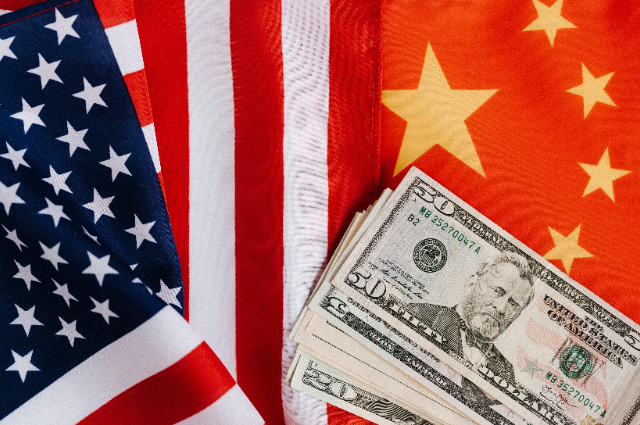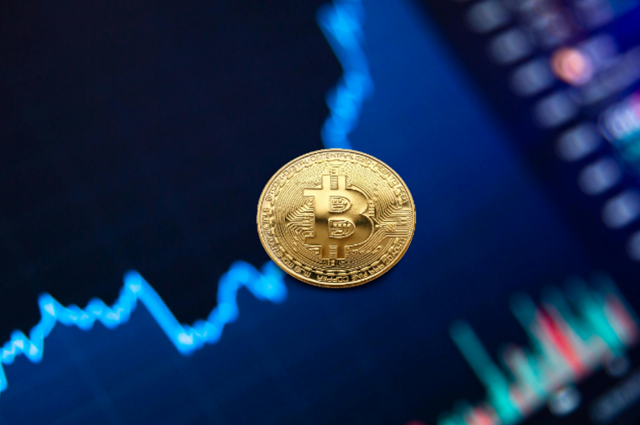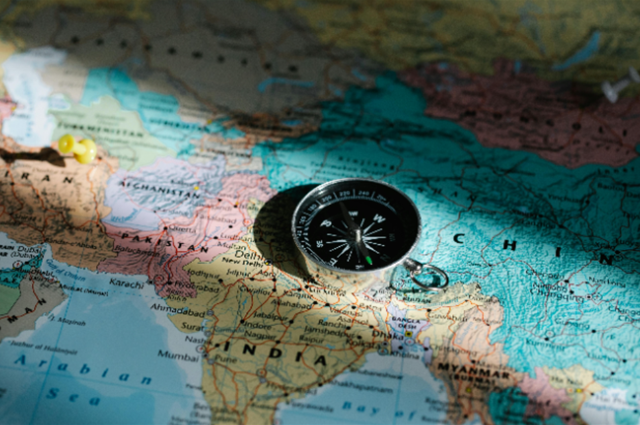
THE ROTTEN CORE: PAKISTAN’S MANUFACTURED ECONOMIC CRISIS
Pakistan isn’t suffering an economic crisis by accident — it’s suffering one by design.
For decades, successive governments have clung to a pattern of reckless borrowing, bloated military expenditure, and fiscal mismanagement so severe that it borders on criminal negligence. Today, the country teeters on the edge of default not because it has no resources, but because it’s run like a military outpost disguised as a democracy.
A. The Symptoms:
- A suffocating debt burden: Over $130 billion in external debt, with repayments swallowing over 40% of the national budget.
- Soaring inflation: Essentials like wheat, oil, and electricity are now luxuries for the average Pakistani. Inflation crossed 30% in 2023, gutting the middle and working classes.
- Foreign reserves crisis: The State Bank’s foreign reserves dropped to under $4 billion, barely enough to cover a few weeks of imports.
- A collapsing rupee: The Pakistani rupee has lost over 60% of its value in the last two years, further driving inflation.
B. Bailout Dependency: The Modern Drug
Rather than solving structural issues, Pakistan runs on a lifeline of international loans, with the International Monetary Fund (IMF) serving as the enabler. In 2023, Pakistan secured a $3 billion short-term IMF package—its 23rd program since 1958. This isn’t rescue anymore; it’s addiction.
Each time, the pitch is the same: promises of reform, economic discipline, and a roadmap to stability. And each time, it ends the same: loan money vanishes into subsidizing fuel, paying interest on old loans, and feeding a defense budget that stays bloated while schools crumble.
The IMF doesn’t hand out freebies. The conditions tied to these loans — subsidy cuts, tax hikes, and currency devaluation — have crippled Pakistan’s poor, while the military-industrial complex and political dynasties remain untouched. In other words, the people bleed, while the generals and oligarchs thrive.
Pakistan’s economic “crisis” is not a national tragedy — it’s a national con, aided and sustained by global lenders, tolerated by Western hypocrisy, and enforced through silence at home.
IMF CONDITIONALITIES AND STRATEGIC LEVERAGE
Behind the sterile language of “economic reform” lies a far more sinister reality: Pakistan’s fiscal future is no longer in its own hands. Each IMF loan comes wrapped in the same suffocating cloth—austerity, sweeping tax hikes, energy subsidy cuts, and enforced currency devaluation. These are not economic band-aids; they are precision tools, carving deep incisions into the sovereignty of a struggling nation.
Let’s not dress it up: the IMF doesn’t give. It demands—and it demands loudly.

1. The “Reform” Myth: Austerity That Bleeds the Poor
Under the guise of “fiscal discipline,” IMF mandates force Pakistan to cut development spending, reduce subsidies on fuel and food, and push indirect taxation that hits the middle and lower classes hardest. In effect, the poor subsidize the debt repayments. Hospitals go underfunded, education stalls, but the defense budget somehow escapes untouched.
Who decides this hierarchy? Not Islamabad.
2. Currency Devaluation: IMF’s Hidden Weapon
When the IMF calls for “market-determined exchange rates,” it knows full well what follows: a crashing rupee, soaring inflation, and public unrest. While exporters and elite investors gain, the average citizen is left gasping for affordable food, medicine, and energy. Devaluation is not neutral—it’s a scalpel that carves power away from the state and hands it to creditors.
3. Tax Reforms or Class Warfare?
IMF-led tax reform campaigns target expanding the tax base, but the base always seems to lie under the feet of the working class. Direct taxes on corporate profits and elite landowners remain weakly enforced, while regressive taxes on electricity, groceries, and digital services skyrocket. This isn’t reform—it’s economic colonization under the pretense of modernization.
4. A Puppet State in a Global Chess Game
The truth few dare to say aloud: IMF conditionalities are geopolitical instruments. The lender pretends to be a savior, but in reality, it is a proxy weapon—wielded by the United States and its allies to discipline unruly partners, reward compliance, and punish defiance. Pakistan, walking a tightrope between U.S. influence and Chinese dependency, finds itself economically kneecapped every time it strays too far from the Western line.
5. From Statehood to Stakeholding
Pakistan today resembles not a sovereign nation but a rented asset in a global tug-of-war. Every IMF review feels like a performance for foreign approval. Budget planning is no longer domestic policy—it is foreign policy. Parliamentarians debate numbers dictated from Washington, not Rawalpindi.
This isn’t assistance. This is strategic leverage disguised as economic recovery.
The question now isn’t how much money Pakistan owes, but how much freedom it’s lost—and to whom.
CHINA'S GROWING ECONOMIC HOLD ON PAKISTAN
The Chinese dragon doesn’t breathe fire—it writes cheques, drafts memorandums, and builds corridors. But the result is just as destructive.
Let’s not sugarcoat it: China is not helping Pakistan—it’s colonizing it through economics.

A. The CPEC Mirage
The China-Pakistan Economic Corridor (CPEC) was paraded as a lifeline—\$60 billion worth of infrastructure dreams, roads, ports, and power plants. A "game-changer," they called it. But what they didn’t tell the Pakistani people was that most of these projects were funded through high-interest loans, not grants, and executed by Chinese companies using Chinese labor. Pakistan foots the bill; China builds the empire.
CPEC’s crown jewel, Gwadar Port, is now more symbolic of Chinese occupation than Pakistani sovereignty. Locals are displaced, resources are siphoned, and what does Pakistan get? A loan repayment schedule and a promise that the economic windfall is "just around the corner."
B. Debt-Trap Diplomacy: Not a Conspiracy, But a Pattern
“Debt-trap diplomacy” isn’t a Western myth—it’s a pattern. Just ask Sri Lanka. Ask Zambia. Ask Laos. And now, ask Pakistan.
China lures developing nations with seductive capital, then tightens the leash when they can’t pay back. In Pakistan’s case, Beijing now owns the narrative, the infrastructure, and the influence. When repayment becomes impossible, concessions follow—strategic ports, tax holidays for Chinese firms, and silence on issues like Uyghur persecution in exchange for loan rescheduling.
What does China get in return? Access. Control. Leverage. And what does Pakistan lose? Autonomy.
C. The U.S. Watches—And Worries
Don’t think Washington is asleep. The U.S. is very aware that CPEC is not just a corridor; it's a red carpet for China into South Asia.
While the IMF pretends to be a neutral financial institution, American fingerprints are all over its decision-making. The U.S., as the IMF’s largest contributor, watches Pakistan’s growing Chinese alignment with increasing unease. But instead of confronting the issue, it plays both sides—quietly greenlighting IMF bailouts for Pakistan while grumbling about Chinese influence in private rooms.
- Here’s the hypocrisy: The U.S. won’t directly give aid to Pakistan anymore due to "security concerns," but it lets the IMF fund a country neck-deep in Chinese debt.
- Why? Because cutting Pakistan off completely would hand it over to Beijing on a silver platter. So they keep it barely breathing—just enough to resist full Chinese ownership, not enough to stand on its own.
This isn't foreign aid. It’s a hostage negotiation.
OPERATION SINDOOR: A TURNING POINT
Operation Sindoor was not just a military maneuver—it was a geopolitical earthquake. Launched by India in early 2025 in response to escalating terror activities and cross-border infiltration, the operation marked the most decisive Indian military action since the Balakot airstrikes of 2019. But this was no surgical strike. It was a calculated, prolonged, and unapologetically offensive campaign that targeted militant launchpads deep inside Pakistan-occupied territories.
The operation's name, “Sindoor,” symbolic of blood and sacred duty, was not chosen lightly. It was a signal—India was done playing diplomatic games over Kashmir while Pakistan danced between jihad and diplomacy. The Indian armed forces acted with unrelenting precision, reshaping not only territorial control but also the diplomatic narrative.
1. Strategic Impact on Indo-Pak Relations
With Operation Sindoor, India redefined its rules of engagement. Pakistan, long accustomed to exporting proxy war under the nuclear umbrella, was caught flat-footed. The retaliation was expected, but the scale was not. The usual cries of victimhood from Islamabad rang hollow on the international stage, especially as satellite imagery and intercepted communications confirmed militant activity in targeted areas.
This operation didn’t just raise the stakes—it changed the game.
2. Funding Terror, Demanding Loans: The IMF Hypocrisy
Here lies the contradiction too glaring to ignore:
How does a bankrupt nation like Pakistan fund sustained military aggression while crying poverty at the doors of the IMF?
Let’s be clear: Pakistan is not just broke—it is default-prone, debt-saturated, and economically unstable. And yet, somehow, its military expenditures remain unaffected. The generals still wear new uniforms. The missile tests still happen. The militant networks still breathe.
The answer lies in a sickening web of global hypocrisy.
While the International Monetary Fund continues to disburse multi-billion-dollar loan packages, allegedly for economic “reform” and “stabilization,” little scrutiny is applied to where that money goes. Infrastructure? Healthcare? Food subsidies? Or are these funds indirectly freeing up domestic resources for Pakistan’s military-industrial complex?
3. International Scrutiny—or Strategic Amnesia?
Operation Sindoor forced global actors to pretend to open their eyes. Headlines were written. Analysts talked of “concerns.” Yet, what followed? Another round of IMF negotiations. Another installment. Another blind eye.
China, Pakistan’s economic puppeteer, keeps feeding loans under the guise of the China-Pakistan Economic Corridor (CPEC)—an initiative that’s turning into a leash around Islamabad’s neck. Meanwhile, the United States, via the IMF, maintains plausible deniability, all while nudging the Fund to keep Pakistan afloat—just enough to avoid collapse, not enough to break free.
If Operation Sindoor proved anything, it is this: The international financial order is perfectly content funding military aggressors, as long as they remain geopolitically useful.
The Unasked Questions
- Why has there been no forensic audit of Pakistan’s defense spending amidst IMF bailouts?
- Why is the global media silent on the timeline between military escalations and IMF fund releases?
- How can a state preparing for war qualify for humanitarian economic assistance?
Pakistan's war drums beat with IMF-funded echo. Operation Sindoor exposed more than militant hideouts—it revealed the complicity of a world order that funds chaos in the name of “stability.” It’s not just Pakistan that needs accountability. The entire ecosystem enabling this double game must be put under the spotlight.
Because peace is not just about stopping missiles. It’s about cutting the money trail that fuels them.
THE IMF’S DUBIOUS ROLE AMID MILITARY ESCALATIONS
When a country is on the brink of economic collapse—crippled by debt, inflation, and currency freefall—logic demands restraint, reconstruction, and reallocation of national priorities. But Pakistan, with a begging bowl on one hand and ballistic ambitions on the other, continues to receive lifelines from the International Monetary Fund (IMF). This raises an uncomfortable but essential question: Is the IMF turning a blind eye to militaristic adventurism in favor of maintaining geopolitical equilibrium?

1. War Drums and Bailouts: A Dangerous Duality
Let’s call it what it is—strategic hypocrisy. Pakistan’s military budget continues to swell, even as the country teeters on the edge of economic implosion. Its continued provocations—particularly following Operation Sindoor and the escalating tensions with India—stand in direct contradiction to the IMF's supposed principles of stability, reform, and peaceful development.
And yet, the funds keep flowing.
Why? What rational institution would funnel billions into a government that diverts attention from socio-economic reform to saber-rattling and war theatrics?
2. Is the IMF Neutral, or Neutered?
The IMF, at least on paper, exists to ensure fiscal responsibility and macroeconomic stability. But its eerie silence in the face of Pakistan’s military escalations suggests something darker: either complicity or cowardice. It is no secret that the IMF’s executive board is disproportionately influenced by major stakeholders—primarily the United States and its allies. Thus, the disbursal of funds to Pakistan—despite clear signs of misuse—raises the possibility that geopolitical utility outweighs ethical consistency.
If the IMF truly functions as a financial doctor, then funding a patient actively injecting poison—through war rhetoric, militant alliances, and military buildup—is not just malpractice. It’s institutional betrayal.
3. The Legal Vacuum: Can a Warring State Be a Worthy Borrower?
This isn't just about morality—it’s about international legality. Article I of the IMF’s Articles of Agreement speaks of promoting peace and cooperation through economic advancement. How, then, does it justify underwriting a government that openly sponsors conflict? Where is the clause that says war preparation qualifies as fiscal reform?
This sets a dangerous precedent. By allowing military-active states to remain eligible for financial assistance, the IMF erodes its legitimacy and becomes an enabler of global instability. Should a nation planning or conducting offensive operations be considered for humanitarian aid or fiscal support? The answer—legally and morally—should be a resounding no
4. The Civilian Cost: Missiles Over Meals
Every dollar pumped into a state that prioritizes guns over grain is a dollar stolen from the mouths of its people. Pakistan’s hospitals remain underfunded. Its schools decay. Unemployment soars. Yet tanks are polished and war rooms stay lit. The IMF cannot claim to promote development while fueling a state that systematically undermines it.
At some point, silence becomes endorsement. The IMF, by continuing its funding pipeline without demanding demilitarization or redirection of funds toward civilian infrastructure, is not just passively indifferent—it is actively complicit.
If the Fund has truly become a geopolitical tool, then the global community must ask: Is it still a multilateral institution? Or has it been hijacked to serve the strategic whims of a few powerful players, at the expense of truth, accountability, and peace?
THE U.S. TWO-FACED DIPLOMACY
On the surface, the United States loudly proclaims its distancing from Pakistan—highlighting Pakistan’s alleged support for terrorism, its military adventurism, and governance failures. Politicians in Washington pontificate about Holding Pakistan accountable cutting aid, and pressuring Islamabad to reform. Yet behind the scenes, a different, far more calculated game unfolds.
The U.S. continues to funnel billions indirectly into Pakistan’s coffers through IMF aid packages it helps orchestrate and support. This shadow funding ensures Pakistan remains afloat financially, preventing a total collapse that could destabilize the region—and, crucially, keep Pakistan tethered to Washington’s sphere of influence.
This duplicity is no accident. It is the product of decades of tangled history and geopolitical pragmatism. During the post-9/11 War on Terror, Pakistan was America’s indispensable ally in Afghanistan, receiving vast amounts of military and economic aid. While publicly condemning Pakistan’s “double game” of supporting militants, the U.S. quietly channeled billions of dollars to keep Pakistan compliant—militarily useful and strategically positioned.
Even as the global narrative turned harsh—accusing Pakistan of harboring terrorists and engaging in covert destabilization—the U.S. never truly cut the financial lifeline. Instead, it shifted aid routes, letting multilateral institutions like the IMF and World Bank become conduits of what is essentially American strategic funding.
This indirect support serves multiple purposes:
- It provides Pakistan with crucial liquidity to avoid economic collapse and social unrest, which could trigger mass migration, refugee crises, or further regional chaos.
- It maintains leverage. By conditioning IMF aid on economic reforms, the U.S. and its allies subtly influence Pakistan’s domestic policy, shaping everything from military budgets to governance reforms.
- It avoids political fallout at home. By disguising aid as international assistance, the U.S. shields itself from accusations of supporting a country many Americans view with suspicion or outright hostility.
This covert diplomacy allows Washington to have its cake and eat it too: publicly distancing from Pakistan to appease domestic critics and regional rivals like India, while privately ensuring Islamabad remains a pliable, if reluctant, partner.
To call this approach hypocritical is to understate the reality. It is a cynical maneuver that treats Pakistan as a geopolitical chess piece—valued only insofar as it serves U.S. strategic interests, regardless of the human cost or Pakistan’s sovereignty.
The truth is stark: The U.S. does not abandon Pakistan. It simply repackages its aid, cloaks it in the language of multilateralism, and uses it as a silent leash to keep Pakistan dancing to Washington’s tune. This two-faced diplomacy is not about principle or values; it is raw power politics, dressed up as humanitarian or economic assistance.
The world should stop pretending. The U.S. has mastered the art of funding Pakistan’s survival while publicly pretending otherwise—and it’s time the global community called out this duplicity for what it truly is.
GEOPOLITICAL TUG-OF-WAR: U.S. VS CHINA IN PAKISTAN
Pakistan today is not just a struggling economy begging for bailouts; it’s a geopolitical chessboard caught in the brutal rivalry between two superpowers—China and the United States. Far from being an independent actor charting its course, Pakistan has become a pawn sacrificed and maneuvered to serve the larger strategic ambitions of these global titans.
At the heart of this contest lies the IMF funding mechanism, which has morphed from a mere financial lifeline into a sophisticated weapon of fiscal warfare. The U.S., unable or unwilling to provide Pakistan with direct military or economic aid openly—due to domestic politics and geopolitical optics—has instead leveraged international financial institutions like the IMF to apply “fiscal pressure.” This pressure subtly coerces Pakistan to tilt away from China’s expanding influence while keeping the fragile economy afloat enough to prevent a total collapse.
China, on the other hand, is aggressively deepening its economic roots in Pakistan through the China-Pakistan Economic Corridor (CPEC)—a flagship Belt and Road Initiative project. Through massive loans, infrastructure projects, and investments, Beijing has not only increased Pakistan’s economic dependence but also embedded itself strategically in the region. This economic grip doubles as a geopolitical foothold that challenges U.S. influence in South Asia and threatens to realign regional power balances.
The U.S. sees Pakistan’s IMF bailouts as an opportunity to reclaim leverage. By controlling the purse strings via IMF conditionalities, Washington can indirectly influence Islamabad’s policy decisions—especially those related to military spending and foreign alliances. The “aid” comes with strings attached: austerity measures, structural reforms, and surveillance over economic decisions. These strings are less about economic reform and more about strategic compliance.
This tug-of-war is ruthless. The IMF loans act as a covert battlefield where the U.S. attempts to stifle China’s ambitions without openly confronting it. By forcing Pakistan into stringent fiscal discipline, the U.S. hopes to limit Islamabad’s ability to fully commit to Chinese-backed projects or to fund military operations that could destabilize the region further.
Yet, Pakistan remains trapped in this squeeze play—forced to accept IMF loans that curtail its sovereignty, while simultaneously shouldering crushing Chinese debt. It’s a no-win scenario designed by larger powers playing their game while Pakistan pays the ultimate price.
In this silent war of economic influence, Pakistan’s fate is not decided by its people or leadership but by the invisible hands of U.S.-China rivalry, with IMF funding serving as the weapon of choice in this modern-day imperial contest.
CONCLUSION
Pakistan stands at a crossroads, shackled by mounting foreign debt and caught in a web of competing global interests. The relentless flow of IMF funds, cloaked in the rhetoric of “aid” and “support,” masks a far darker reality — a slow erosion of Pakistan’s economic sovereignty and political independence. Every loan disbursed is less about genuine development and more about maintaining a fragile geopolitical balance where Pakistan is little more than a pawn.
We must ask:
- At what cost does this so-called “assistance” come?
- When billions flow into Islamabad under the guise of economic rescue, who truly benefits?
Certainly not the ordinary Pakistani citizen, crushed under inflation, austerity measures, and a rising cost of living. Instead, the funds prop up an elite establishment, fund military posturing, and serve as currency in a dangerous game between global powers—primarily the U.S. and China—each maneuvering to expand their influence over Pakistan’s fate AND FUNDING THE TERRORISM.
